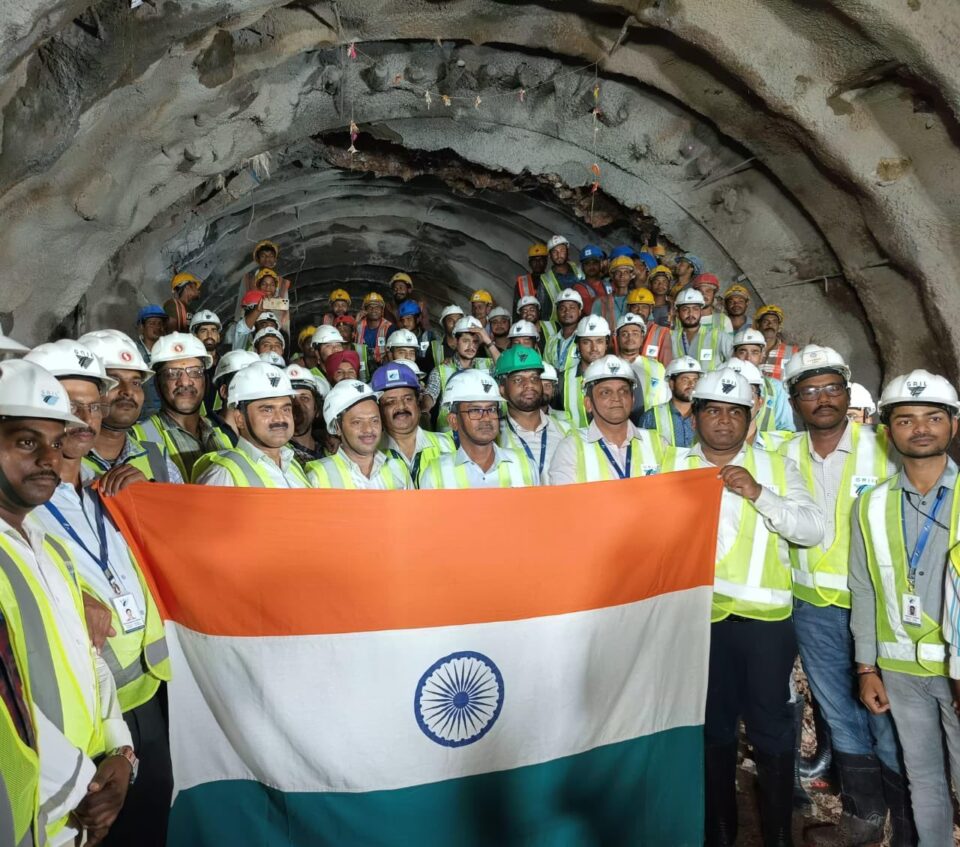Rishikesh to Karnaprayag in Just Two Hours: India’s Longest Railway Tunnel Marks Historic Breakthrough
Devbhoomi gets closer: Indian Railways sets new benchmark with Himalayan railway engineering marvel
Indian Railways has achieved a monumental breakthrough in the Rishikesh–Karnaprayag rail project, marking the successful completion of the country’s longest railway tunnel, constructed between Devprayag and Janasu. This milestone not only shortens the travel time between Rishikesh and Karnaprayag to just two hours but also opens a new chapter in Himalayan infrastructure development.
“This project marks the first time Tunnel Boring Machine (TBM) technology has been used in mountainous terrain. The 9.11-meter diameter Single Shield Rock TBM demonstrated exceptional speed and precision, setting a new benchmark in Indian construction,” said Shri Ashwini Vaishnaw, Union Minister for Railways.
The Rishikesh–Karnaprayag rail line, a 125.2 km broad-gauge corridor, is part of the Char Dham Rail Project aimed at connecting Uttarakhand’s four sacred pilgrimage sites—Yamunotri, Gangotri, Kedarnath, and Badrinath—to the national railway network. The project promises to redefine the spiritual and natural landscape of the region.
Travelers and locals alike have long struggled with limited road access and frequent disruptions due to landslides and extreme weather. This railway project is a transformative step towards providing year-round, reliable, and fast connectivity across the challenging Himalayan terrain.
Key Project Highlights:
• India’s Longest Railway Tunnel: The 14.577 km Tunnel T-8, inaugurated on April 16, 2025, by Rail Minister Ashwini Vaishnaw and Uttarakhand Chief Minister Pushkar Singh Dhami, is a milestone in Indian tunneling history.
• Advanced TBM Technology: In August 2024, TBMs ‘Shiv’ and ‘Shakti’ set a national record by excavating 1,080.11 meters in a single month.
• Tunnel-Dominated Corridor: 83% of the rail route passes through tunnels, featuring 17 main tunnels and 12 escape tunnels, with a combined tunnel length of 213 km—of which 193 km is already completed.
• 38 Tunnel Breakthroughs: Out of 38 planned tunnel breakthroughs, 28 have been successfully completed.
Strategic and Social Impact:
Currently, it takes 6–7 hours to cover the road journey between Rishikesh and Karnaprayag, which is prone to delays due to landslides and monsoon rains. With this rail line, travel time will be reduced to approximately two hours, significantly improving convenience, safety, and reliability for pilgrims, tourists, and locals.
The project will connect five key districts—Dehradun, Tehri Garhwal, Pauri Garhwal, Rudraprayag, and Chamoli—linking important towns such as Rishikesh, Muni Ki Reti, Devprayag, Srinagar, Rudraprayag, Gauchar, and Karnaprayag via rail. This will drastically enhance access to healthcare, education, employment, and markets for people living in remote hill areas.
Economic Boost for the Region:
The Rishikesh–Karnaprayag rail line is expected to significantly boost tourism in Uttarakhand. Beyond Char Dham pilgrimage routes, destinations like Rishikesh, Haridwar, and Auli will become more accessible, benefiting the local economy, hospitality sector, and transportation services. Emerging business hubs in Devprayag, Srinagar, Rudraprayag, and Gauchar will further generate employment and promote economic activity.
Looking Ahead:
The first phase of the project is targeted for completion by the end of 2026, with full operations expected by mid-2027. The total project cost is estimated at over ₹16,000 crore.
This rail project is not just an engineering achievement—it is a spiritual, economic, and social lifeline that will uplift the lives of millions in the Himalayan region and enhance the ease and experience of Char Dham Yatra for generations to come.

